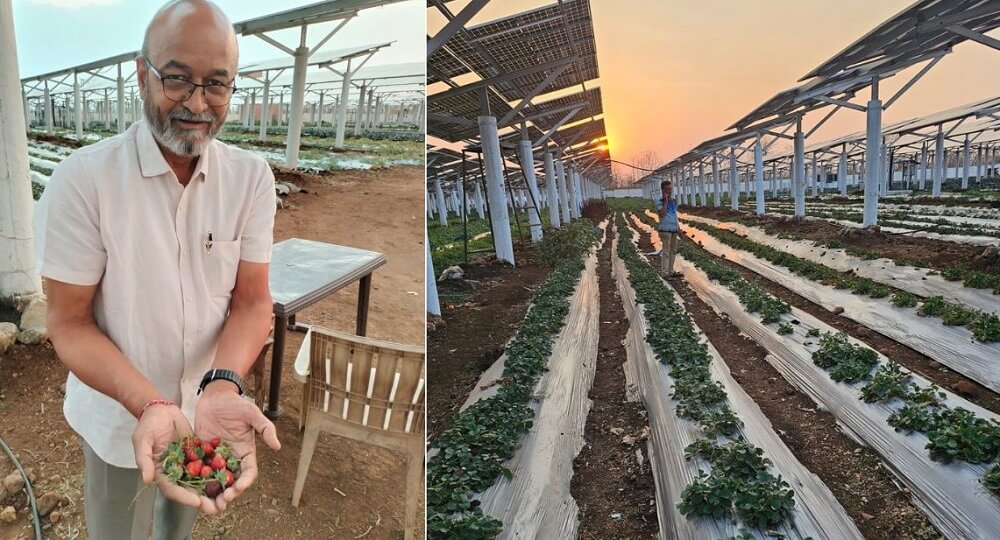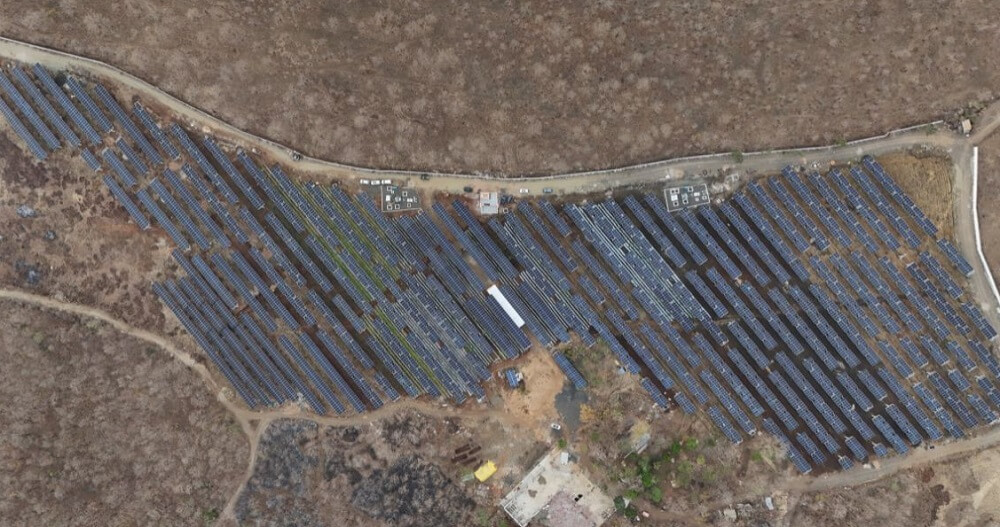When one farmer decided to use a sustainable farming model to maintain his crops, he ended up creating India's largest agrivoltaic solar plant.
Agrivoltaics is "a technology that merges agriculture with photovoltaic power," per The Better India. The publication highlighted Anand Jain's 16-acre farm in Sagar, Madhya Pradesh, which uses agrivoltaics to produce organic fruits and vegetables.

Jain bought the patch of land back in 1999 with the goal of turning it into farmland. When Jain installed a solar panel system at home about five years ago, he realized using solar energy to nurture crops could be a game-changer.
Manish Khare, co-founder of Khare Energy Pvt. Ltd., helped Jain build the agrivoltaic system. The farm's elevated solar panels generate up to 25,000 units of electricity per day to produce crops without losing arable land.

The panels are up to 13 feet tall and spaced about eight meters apart, leaving the proper amount of space for tractor access. To maintain optimal panel performance, Jain designed a tractor-mounted platform to help workers clean the panels on a regular basis.
According to the U.S. Department of Energy, agrivoltaics could lower the amount spent on operations and maintenance while helping sustain rural farmland economies. While upfront costs may deter some, Khare said Jain's project is an example of how the dual-use technology can benefit farmers.
Save $10,000 on solar panels without even sharing your phone number Want to go solar but not sure who to trust? EnergySage has your back with free and transparent quotes from fully vetted providers that can help you save as much as $10k on installation. To get started, just answer a few questions about your home — no phone number required. Within a day or two, EnergySage will email you the best local options for your needs, and their expert advisers can help you compare quotes and pick a winner. |
"It shows that scalable agrivoltaic systems can work in rural India and help maximize land productivity by integrating solar power and farming," Khare told The Better India.
Agrivoltaic systems may also be a solution to growing population demands. According to Earth.Org, energy and food production need to increase significantly by 2050 to meet population needs.
Traditional energy sources, mainly fossil fuels, are a major contributor to the warming of the planet. However, a study published in Renewable and Sustainable Energy Reviews found that agrivoltaics reduce heat-trapping gases and boost crop yields.
Sustainable farming helps protect habitats while also improving water quality and soil health, per the World Wildlife Fund. While the agriculture sector as a whole consumes about 69% of the world's fresh water, Jain said the shade from solar panels at his farm helps conserve water by reducing soil evaporation.
TCD Picks » Upway Spotlight
💡Upway makes it easy to find discounts of up to 60% on premium e-bike brands
|
What's the biggest obstacle stopping your organization from using solar panels? Click your choice to see results and speak your mind. |
India has a plan to transition to renewable energy, with a goal of reaching 280 gigawatts of solar capacity by 2030. Meanwhile, Jain's agrivoltaic farm continues to be recognized as the farmer encourages his peers to invest in the technology.
"Agrivoltaics represents an opportunity — a chance for farmers to secure their financial future, engage in sustainable practices, and contribute to broader environmental goals," Jain said.
Join our free newsletter for weekly updates on the latest innovations improving our lives and shaping our future, and don't miss this cool list of easy ways to help yourself while helping the planet.















